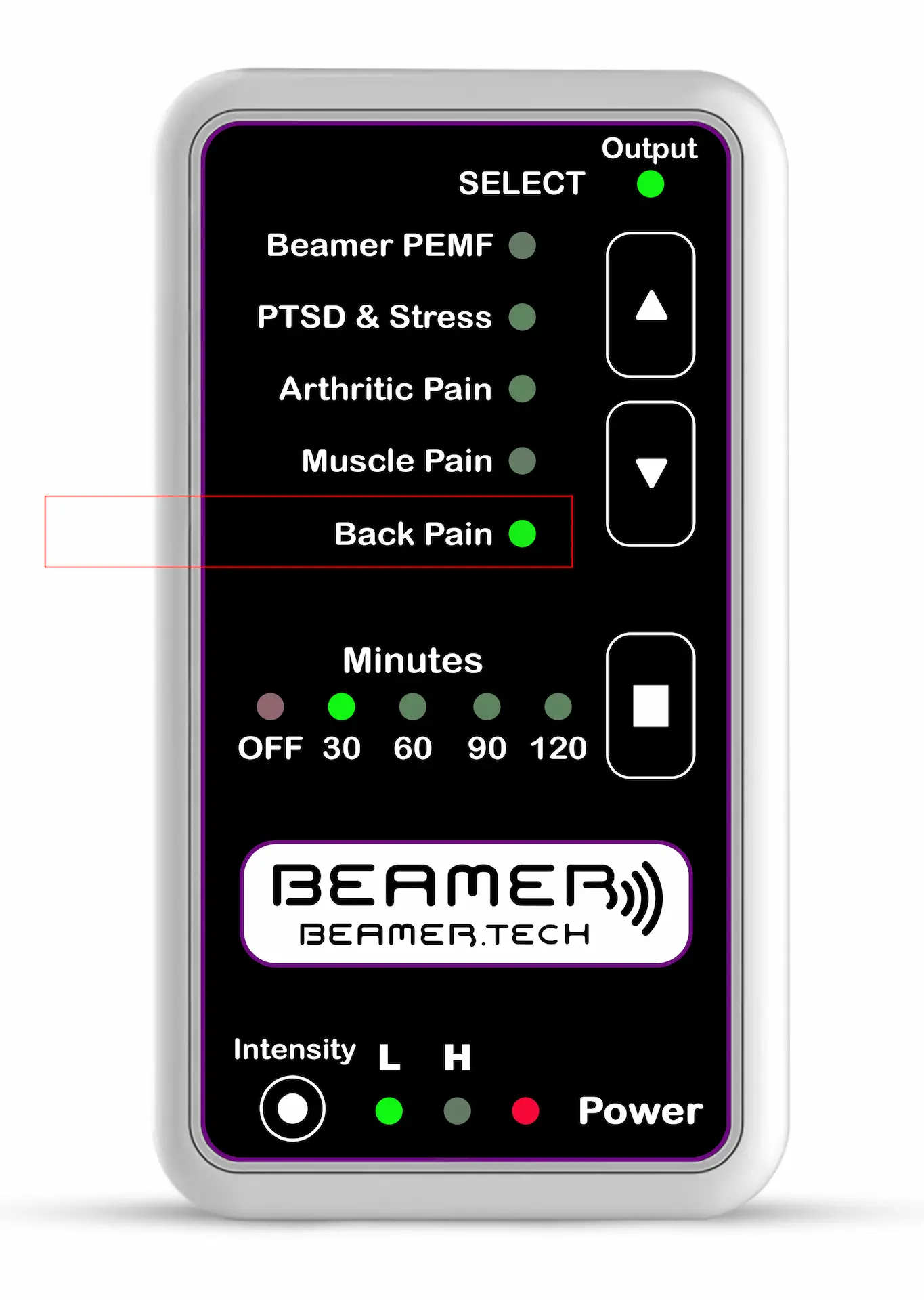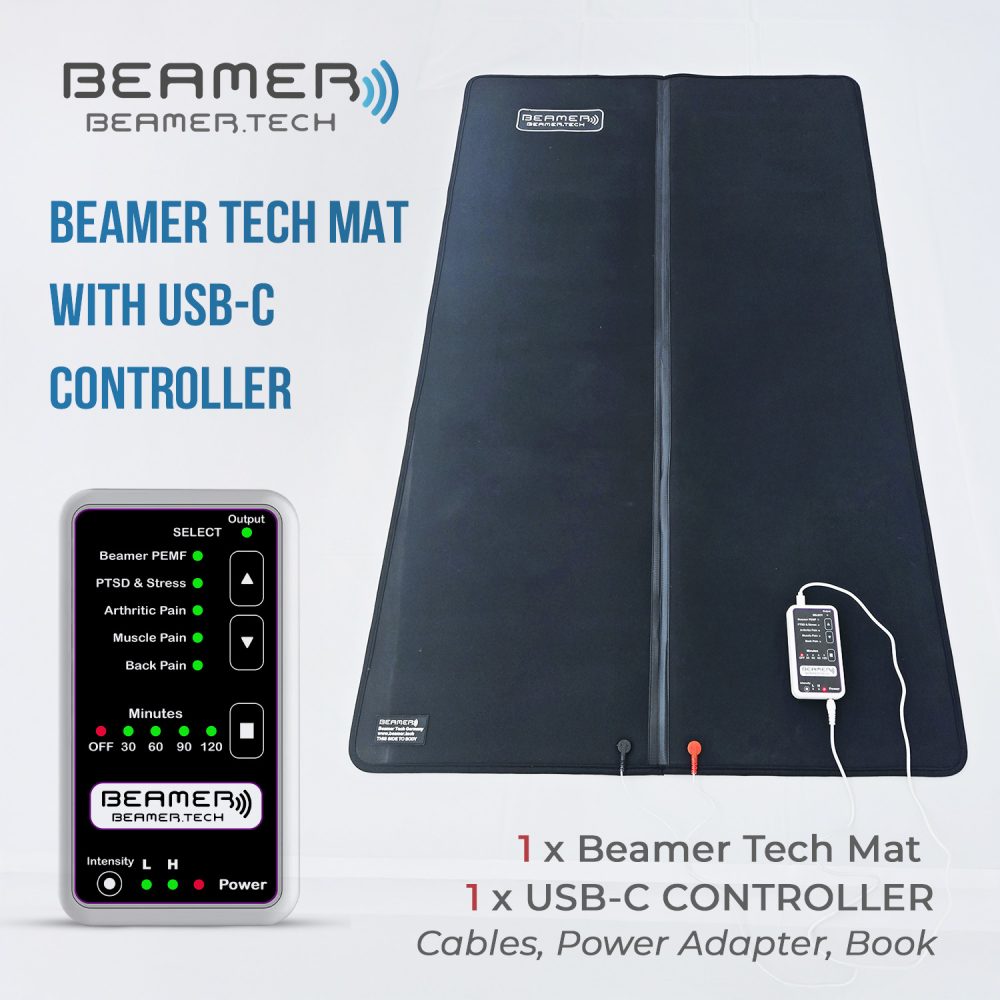Back Pain Relief Program

PEMF therapy addresses back pain through three primary mechanisms: inflammation reduction, muscle relaxation, and nerve modulation. Program 5's lower frequencies (0.14–7.5 kHz) target deep muscle layers and fascia, helping to release tension in the erector spinae and quadratus lumborum muscles that commonly contribute to back discomfort. The mid-range frequencies (55–96.6 kHz) enhance cellular repair in damaged spinal discs and connective tissues, while the higher frequencies (376.29–932 kHz) work to disrupt pain signals traveling along spinal nerves. This comprehensive approach ensures relief for various back pain causes, from muscle strains to degenerative disc issues.
For nerve-related back pain (such as sciatica or compressed nerve roots), Program 5's 425.09 kHz and 571 kHz frequencies are particularly valuable. These frequencies appear to stabilize hyperactive nerve membranes, reducing the firing of pain signals without systemic side effects. Research suggests PEMF at these ranges may also decrease substance P (a key pain neurotransmitter) in the dorsal root ganglia, providing lasting relief beyond the treatment session. The 833 kHz frequency has shown special promise in reducing radicular pain that radiates down the legs from lumbar nerve compression.
For nerve-related back pain (such as sciatica or compressed nerve roots), Program 5's 425.09 kHz and 571 kHz frequencies are particularly valuable. These frequencies appear to stabilize hyperactive nerve membranes, reducing the firing of pain signals without systemic side effects. Research suggests PEMF at these ranges may also decrease substance P (a key pain neurotransmitter) in the dorsal root ganglia, providing lasting relief beyond the treatment session. The 833 kHz frequency has shown special promise in reducing radicular pain that radiates down the legs from lumbar nerve compression.
Structural back pain benefits from the program's focus on tissue regeneration. The 55 kHz and 376.29 kHz frequencies stimulate fibroblast activity, supporting repair in ligaments and tendons surrounding the spine. For degenerative conditions like osteoarthritis of the facet joints, the 96.6 kHz frequency may help slow cartilage breakdown while improving synovial fluid production. This makes Program 5 valuable not just for symptom management but potentially for modifying disease progression in chronic back conditions.
The Beamer mat's full-body design is particularly advantageous for back pain treatment. it simultaneously addresses:
- Primary pain sites (e.g., herniated discs)
- Compensatory tension patterns (e.g., tight hips from altered gait)
- Systemic inflammation contributing to chronic pain
Users can position themselves to emphasize treatment of specific areas (e.g., lying supine for lumbar issues or prone for thoracic stiffness), with light clothing recommended to maintain optimal field penetration.
Clinical observations support Program 5's effectiveness, with studies showing PEMF can:
- Reduce lower back pain scores by 40–60% after consistent use
- Improve spinal mobility in ankylosing spondylitis patients
- Decrease reliance on NSAIDs and opioids for chronic back pain

The 932 kHz frequency, unique to this program, appears particularly effective for breaking pain-spasm cycles in paravertebral muscles, offering relief when traditional therapies fall short.
In summary, Beamer's Program 5 provides a drug-free, non-invasive solution for comprehensive back care. By combining tissue-specific frequencies with whole-body PEMF delivery, it addresses:
✓ Muscle tension
✓ Nerve irritation
✓ Structural degeneration
✓ Systemic inflammation
For best results, the manufacturer recommends 4–5 weekly sessions of 90+ minutes, combined with posture awareness and gentle movement to reinforce therapeutic benefits.
Key Points relating to program 5:
• Multi-target approach for different back pain types
• Includes validated frequencies for disc, nerve, and joint issues
• Full-body treatment addresses compensatory pain patterns
• May reduce need for invasive procedures in chronic cases



